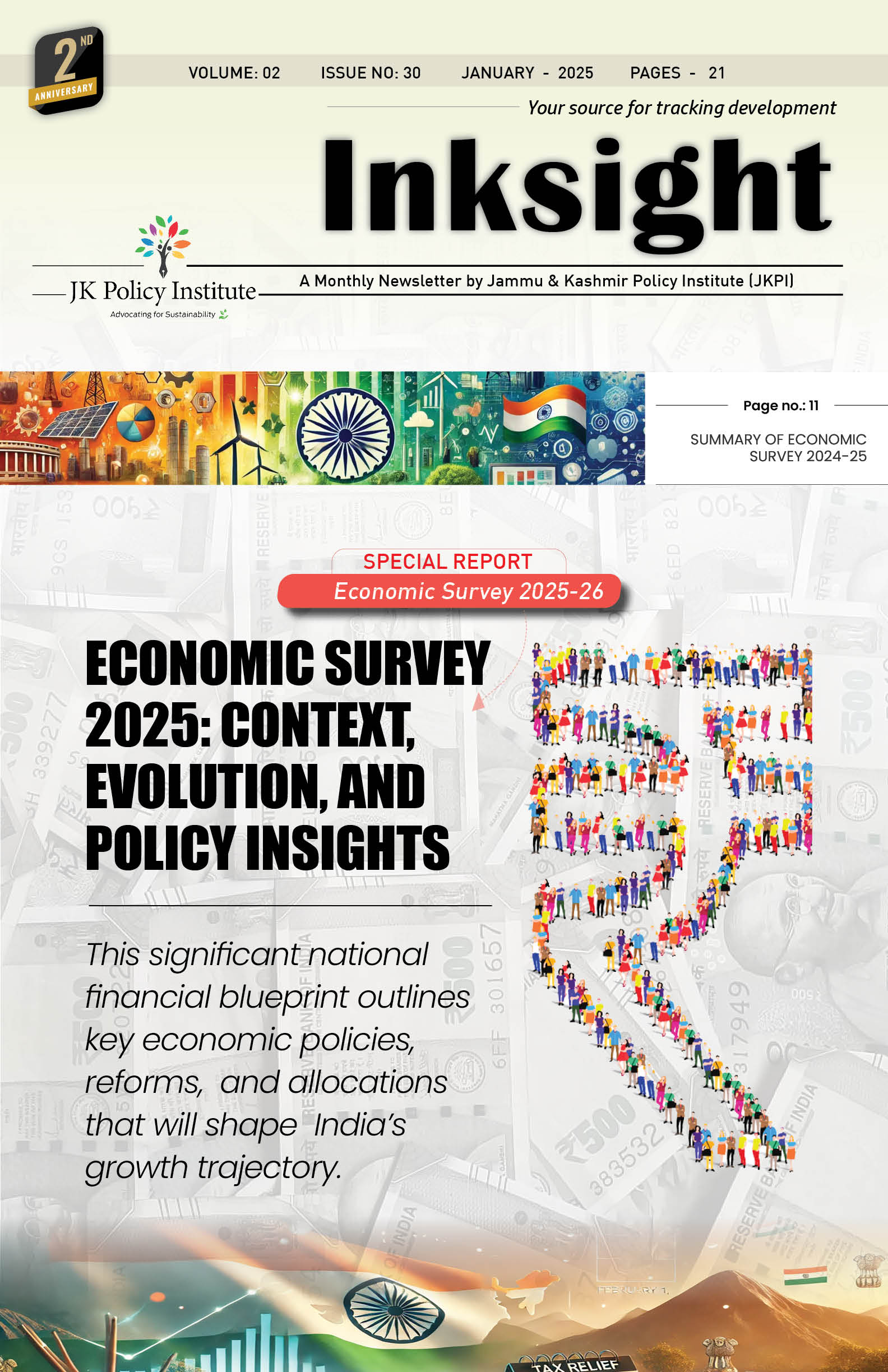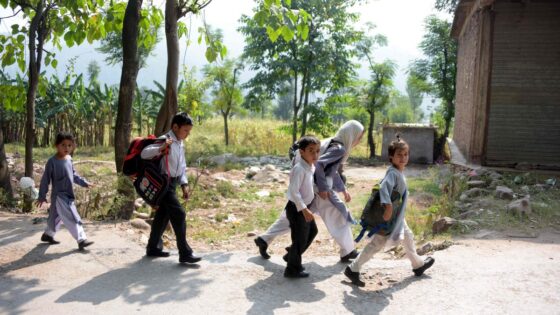Education is a critical pillar of societal development and the cornerstone of human progress. It serves as a gateway to opportunity, upward mobility, and development, acting as an engine of social transformation. Students are the most essential elements of any education system. To fulfil the objectives of education, student enrollment is a prerequisite for producing desired results and expanding access to education. A declining enrollment rate in schools is not a good sign but rather a growing cause for concern. Increasing enrollment is considered a positive indicator, ensuring access to opportunities. India’s education system is among the largest in the world, with over 1.5 million schools, 8.5 million instructors, and over 250 million students from diverse socio-economic backgrounds spread across 29 states and 7 union territories, according to the 2019 report of the Unified District Information System for Education Plus (UDISE+).
In India, the Unified District Information System for Education (UDISE) is the only official source of information for the school education system. This organizational structure evolved over a long time. UDISE was launched in 2012-13 by integrating the District Information System for Education (DISE) for elementary education and the Secondary Education Management Information System (SEMIS) for secondary education. According to the UDISE+ report for 2021-22, total enrollment in schools (Class 1 to 12) increased by 0.76% in 2021-22 compared to 2020-21. The total enrollment in 2021-22, from primary to higher secondary levels of school education, was slightly over 25.57 crore. Enrollment was 13.28 crore for boys and 12.28 crore for girls, representing an increase of more than 19 lakh students compared to 2020-21. However, this increase in enrollment does not reflect growth across all states in India.
The gross enrollment ratio (GER) is an important indicator used to determine the number of students enrolled at specific levels of education, such as primary, secondary, or tertiary. It assesses the general level of student participation in the education system. The following GER data is based on gender (boys and girls) in India for the years 2018-19, 2019-20, and 2020-21, covering different levels of education: pre-primary, primary, upper primary, secondary, and higher secondary.

The UDISE+ report also provides a comparison of several major school infrastructure facilities available from 2018-19 to 2021-22. This includes electricity connections, libraries, internet access, ramps, handwashing facilities, and drinking water. The UDISE+ 2021-22 data shows that all major infrastructural facilities have improved in 2021-22 compared to the previous year.

Kashmir Context
Despite efforts to expand access to education, Kashmir is grappling with low enrollment. An analysis of enrollment for the academic years 2023-24 and 2022-23, based on UDISE+ data for government schools, shows a decline of 61,451 students in one year. This decline was observed when comparing the UDISE data for 2022-23 and 2023-24. The decrease in student enrollment was identified in 554 schools across Jammu and Kashmir within a year.
The Annual Status of Education Report (ASER) 2022 revealed that the enrollment of children aged 6-14 years in government schools in J&K decreased from 58.3% in 2018 to 55.5% in 2022. According to the report, 4.8% of children aged 15-16 were not enrolled in schools in J&K. Furthermore, the survey indicated that approximately 72.8% of schools have toilets used by both girls and boys, highlighting that 47% of girls experience a shortage of toilets. This compromises students’ access to the basic facilities they are entitled to.
The Department of School Education and Literacy (DSEL), an agency under the Government of India, revealed that student enrollment in government schools across J&K decreased by 2%. According to the report, enrollment decreased by 0.2 lakh at the primary level and 0.1 lakh at the upper primary level, resulting in a reduction of 0.34 lakh at the elementary level. The decrease was approximately 0.07 lakh at the secondary level and 0.04 lakh at the higher secondary level.
Due to the abysmal or zero enrollment of students in government schools, the total number of public schools in Jammu and Kashmir decreased by nearly 19% in 2023. Government schools also witnessed a decline in the retention rate, which was 60% at the elementary level and 50% at the secondary level. The Ministry of Education (MoE) reported that out of the total 23,173 schools in the UT, 848 have zero enrollment. Furthermore, there are 16,179 schools with fewer than 50 students enrolled. Additionally, there are 2,413 single-teacher schools in the UT. According to a Project Approval Board (PAB), the J&K School Education Department has performed poorly in retention rates at the primary, upper primary, and secondary levels. The PAB reported that total enrollment declined by nearly 1.75 lakh across classes in 2019-20.
The “JK Vision Document 2047” emphasizes the critical importance of skilled human resources in teaching. The region’s educational infrastructure has been severely impacted by financial constraints and a scarcity of qualified teachers. The infrastructure and hygienic amenities at educational institutions are depicted in a dismal light in the ASER Report 2022. According to the report, over half of the schools in J&K lack toilets for girls, and 30% of schools in the region lack water facilities.
The 2023 Annual Status of Education Report (ASER) presented the educational scenario of Anantnag district in south Kashmir as a case study. The ASER team surveyed about 1,410 children aged 14-18 regarding their enrollment and employment status. According to the survey, 5.5% of girls and 1.7% of boys under the age of 18 are not enrolled in school. The survey reported that 61% of youth in this age group, including 59.5% of males and 62.1% of females, are enrolled in government institutions, while 0.4% are enrolled in vocational training or other courses.

% youth currently enrolled in school or college, by age group, type of institution and sex
The findings of the ASER report reveal that about 76.5% of youth aged 14-16 can read at least a second-grade level text, 39.3% can perform division, and 87.2% can read English sentences. The ASER report further indicates that 19% of youth aged 17-18 are not enrolled in a school or college, while 72.2% are enrolled in government institutions and 2.3% are enrolled in vocational training or other courses.

Distribution of youth by Age group and Enrollment status (%)
Way Forward
According to Sustainable Development Goal 4 (SDG-4), all boys and girls should have access to primary and secondary education that is fully free, equitable, and of high quality by 2030, to produce learning outcomes that are both relevant and useful. However, the current school education system in J&K is plagued by a host of problems, particularly the ongoing crisis of declining enrollment rates. Poor design and layout of schools discourage parents, and another unresolved issue is the lack of infrastructure in government schools. The government should initiate an inquiry to determine why deficiencies in government school infrastructure persist. As a result, there has been a growing trend toward private schools, largely due to perceptions of higher quality in education and infrastructure.
Besides these issues, other ancillary problems include inadequate teacher allocation, poor systemic governance, lack of teacher training, outdated teaching practices, and poor infrastructure. An important factor is the rising cost of living and the impact of inflation on individual households and the economy as a whole. Inflation particularly affects the poor and marginalized, making it difficult for parents to afford basic education, even in public schools. Rising costs for items such as books, uniforms, and transportation can lead to a decline in school enrollment as these expenses become unaffordable.
To address the declining student enrollment in schools, the government should constitute a high-level committee of academicians and administrators to conduct an unbiased examination of the entire problem and develop frameworks and proposals for new policies. Although low student enrollment numbers are not solely the result of teachers’ performance, the department should investigate why parents in J&K prefer private schools over public ones.
Flawed policies of previous governments should be reviewed to identify problems and determine necessary policy interventions. The government must examine how schools in J&K were established under the former SSA model, rather than focusing solely on the enrollment decline. It is now widely acknowledged that the plan was designed to appease the vote bank and that no regulations were followed when schools were opened in rural areas. Therefore, the responsibility for the issues within the department should lie with successive administrations rather than with lower-level department officials or the teaching community.
References
-
-
https://dsel.education.gov.in/sites/default/files/update/UDISE_Booklet.pdf
-
https://newsofkashmir.com/index.php/2024/07/04/decline-in-school-enrolment/
-
-
https://kashmirlife.net/amid-enrolment-decline-government-schools-in-jk-shrink-by-19-percent-331314/
-
-
https://www.greaterkashmir.com/opinion/declining-student-enrollment-in-schools-who-is-responsible/
-
https://www.dailyexcelsior.com/enrollment-of-children-aged-6-14-in-govt-schools-witnesses-dip-in-jk/
-
-
https://kashmirpatriot.com/2024/04/23/over-800-govt-schools-in-jk-with-zero-student-enrolment/
-
-




Leave a Reply
You must belogged in to post a comment.